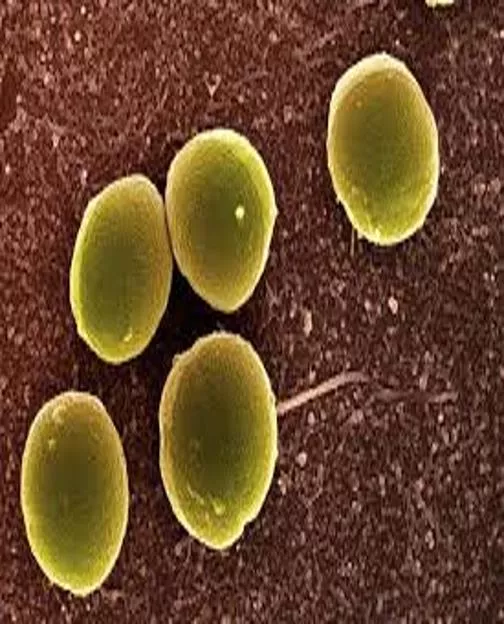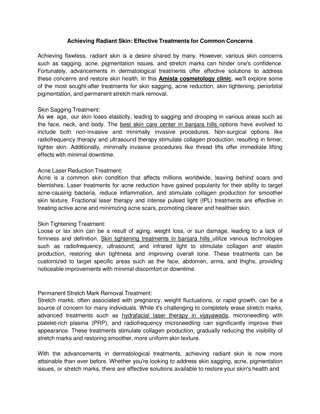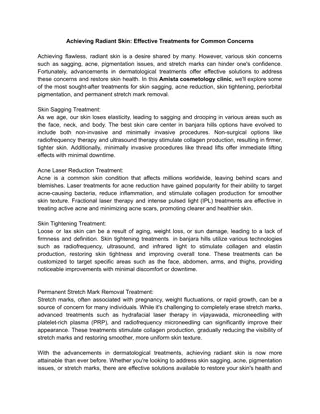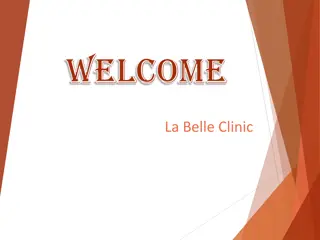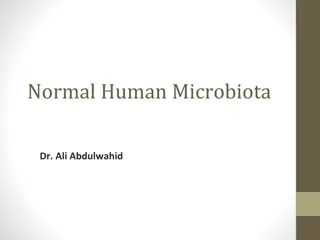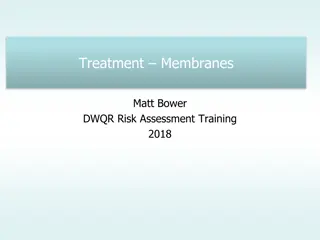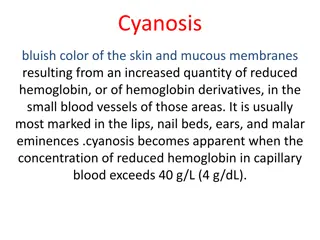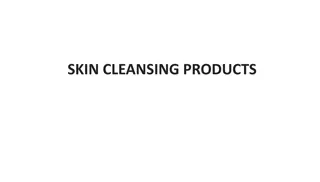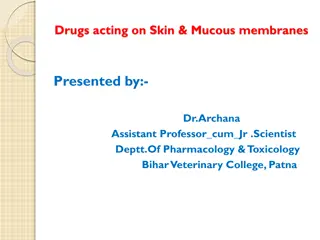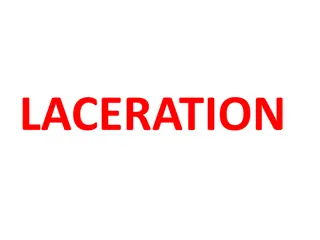Understanding Infections through Skin and Mucous Membranes
Infections can be transmitted through skin and mucous membranes via direct or indirect human contact, as well as from non-human sources. The infective agents include viruses, bacteria, fungi, and arthropods. Factors like high population density, poor hygiene, and host behavior play crucial roles in infection transmission. Control measures involve eliminating reservoirs, improving hygiene, and vaccination.
Download Presentation

Please find below an Image/Link to download the presentation.
The content on the website is provided AS IS for your information and personal use only. It may not be sold, licensed, or shared on other websites without obtaining consent from the author. Download presentation by click this link. If you encounter any issues during the download, it is possible that the publisher has removed the file from their server.
E N D
Presentation Transcript
INFECTIONS THROUGH SKIN AND MUCOUS MEMBRANES Dr. Mayssaa Essam
The infective agents Infections transmitted through human contact Infections acquired from non-human sources Infections transmitted through skin and mucous membranes may be divided into two groups: Transmission requires human contact either direct (person to person) or indirect (through fomites). Infection is acquired from various non-human sources: (i) infected soil (hookworm); (ii) water (schistosomiasis); (iii) animal bites (rabies); or (iv) through wounds (tetanus). THE INFECTIVE AGENTS The agents include viruses, bacteria, fungi and arthropods.
PHYSICAL AND BIOLOGICAL CHARACTERISTICS Some of the agents that require direct person to person contact which do not survive long outside the human host and cannot become established in any part of the environment outside the human body, either in an alternate host or in an inanimate object such as soil or water. The sexually transmitted diseases such as gonorrhoea and syphilis are the best examples of this group; the usual mode of infection is therefore through intimate contact, mucous membrane to mucous membrane, or skin to skin. The infective agents that can survive in the environment for relatively longer periods may be spread indirectly through the contamination of soil and other inanimate objects. In most of these infections humans are the sole reservoir of infection, although some of the superficial fungal infections may be acquired from lower animals.
TRANSMISSION Infection by direct contact may result from touching an infected person; or more intimate contact through kissing and sexual intercourse may be required, especially in the case of sexually transmitted diseases. Indirect contact through the handling of contaminated objects such as toys, soiled clothing, bedding or dressings may be sufficient for the transmission of some infections. High population density as in urban areas, overcrowding within households and poor environmental and personal hygiene facilitate the transmission of these infections. Host factors The behaviour of the human host is an important factor in the occurrence of certain contact infections, Age is another important factor in the occurrence of contact infections.
Control of contact infections 1 -The infective agent Elimination of the reservoir by case finding, selective or mass treatment. 2 -The route of transmission Improvement of personal hygiene; Elimination of overcrowding; Avoidance of sexual promiscuity. 3- The host Specific immunization, e.g. tetanus; Chemotherapy and chemoprophylaxis.
INFECTIONS TRANSMITTED THROUGH HUMAN CONTACT/ VIRAL INFECTIONS Chickenpox Chickenpox is an acute febrile illness with a characteristic skin rash. The incubation period is usually from 10 to 21 days. The aetiological agent is the varicella-zoster virus (VZV). EPIDEMIOLOGY Chickenpox is a common infection all over the world. Reservoir and transmission The reservoir of infection is exclusively human. Transmission is from person to person, either directly through contact with infectious secretions from the upper respiratory tract and through droplet infection or indirectly through contact with freshly soiled articles. The patient remains infectious 1 2 days before the rash appears and until all blisters have formed scabs.
Host factors Host factors play an important part in determining the clinical manifestations of this infection. In most cases, it is a mild, self-limiting disease. It tends to be more severe in adults than in children. The overall case fatality rate is low, but it is high in cases complicated with primary viral pneumonia. Severe infections may occur in immunocompromised patients. One attack of chickenpox usually confers lifelong immunity. LABORATORY DIAGNOSIS The organism may be cultured or identified immunologically from the early skin lesions or from throat washings. Arising titre of antibodies in acute and convalescent sera is also diagnostic.
Control: Immunization of high-risk groups Notification. IMMUNIZATION In some developed countries, a live attenuated varicella virus (Oka strain) vaccine is now available and is routinely offered to non-immune children 12 months to 12 years. High- risk groups including immunocompromised persons may be protected passively with varicella-zoster immunoglobulin made from plasma of healthy volunteer blood donors with high levels of antibody to VZV.
Viral haemorrhagic fevers Several viral haemorrhagic fevers that affect humans.(Arenaviruses : Lassa fever; Bunyaviruses : haemorrhagic fever; Filoviruses : Ebola haemorrhagic fever ; Flaviviruses : Yellow fever). Lassa fever, Marburg virus disease and Ebola virus disease. A common feature of these infections is that transmission requires intimate exposure to the patient or contact with blood or other bodily secretions. PREVENTION OF TRANSMISSION IN HOSPITAL Risk factors for nosocomial or person to person spread are: Care of an infected individual. Contact with infected needles. Contact with blood or secretions. Preparation of a body for burial. Sexual contact.
EBOLA VIRUS DISEASE First recognized in 1976, sporadic outbreaks of Ebola haemorrhagic fever have been reported in humans from the Democratic Republic of the Congo, Sudan and Uganda and in non-human primates monkeys and chimpanzees (USA). The causative agent is an RNA virus of the family Filoviridae, the same family as the Marburg virus. Three species of the virus have been associated with human disease: Ebola Zaire, Ebola Sudan, and Ebola Ivory Coast. The fourth, Ebola Reston, was responsible for an outbreak in non-human primates, but so far, not in humans. Transmission Humans can transmit the virus by direct contact with the blood or secretions of an infected person. It spreads through the families and friends who take care of infected persons. No animal reservoir has yet been identified and the cycle of transmission is not known. Control Since the reservoir of infection is not known, there is no primary preventive intervention available. Precautions outlined for Lassa fever equally apply to Ebola but the latter does not respond to treatment with ribavirin??.
SEXUALLY TRANSMITTED DISEASES These are infections which are specifically transmitted during sexual intercourse. Although various other infections may be transmitted during sexual intercourse, the commonly recognized sexually transmitted diseases include: 1 -Viral and rickettsial infections HIV/AIDS; 2- Bacterial infections gonorrhoea; sexually transmitted syphilis. 3- Protozoal infections trichomoniasis The infective agents share the characteristic of being delicate, being easily killed by drying or cooling below body temperature, and with the reservoir exclusively in man. Hence, transmission is mainly through direct close contact but rarely indirectly through fomites
Transmission Lesions are generally present on the genitalia, and the infective agents are also present in the secretions and discharges from the urethra and the vagina. Transmission occurs through: Genital contact; Extragenital sexual contact; kissing; Non-sexual transmission; mother to child transmission (MTCT) of HIV infection and syphilis, gonococcal ophthalmia neonatorum, or accidental contact as when doctors, dentists infected with syphilis. fomites; soiled moist clothing . blood and blood products; HIV infection.
HIV infections and acquired immune deficiency syndrome (AIDS) The aetiological agents of the disease ( (clinical syndrome of acquired immune deficiency syndrome (AIDS)) are strains of two related retroviruses, human immunodeficiency viruses HIV-1 and HIV-2. Occurrence: Worldwide (high concentrations in Africa and other developing countries). Reservoir: Humans Transmission: Sexual contact, blood transfusion, contaminated needles, perinatal infection Control: Education, safe blood supplies, counselling of patients, specific chemotherapy
The clinical spectrum of HIV infections Stage Disease Clinical features *Initial Acute infection type illness Seroconversion. *Intermediate Asymptomatic infection AIDS-related complex (ARC) Fever, weight loss *Late Full-blown AIDS Opportunistic infections: CNS toxoplasmosis atypical mycobacterial infection . herpes virus infection . Secondary cancers: Kaposi s sarcoma Neurological disease AIDS dementia complex. Mononucleosis- None
LABORATORY DIAGNOSIS *Antibody antigen detection Serological tests are widely used to detect antibodies; they are simple to perform, sensitive and specific at most stages of the infection, and relatively inexpensive. ELISA tests?? are commonly used for screening sera and more specific tests (e.g. Western blot technique??) *Blood cell count As infection progresses, there is a fall in the blood count of the CD4?? lymphocytes from the normal level of about 800/mm3. When the CD4 count falls below 200/mm3, the patient becomes attack to tuberculosis and a variety of opportunistic infections
PROTOZOAL INFECTION Trichomoniasis This is a chronic infection of the genital tract of both sexes. In the female it presents with vaginitis accompanied by copious discharge; in the male, with urethritis. The incubation period is from 1 to 3 weeks. PARASITOLOGY The causative agent is Trichomonas vaginalis, a protozoan flagellate. LABORATORY DIAGNOSIS Microscopy of wet film preparation of vaginal or urethral discharge may show the motile organism. The organism can also be identified in stained smears.
Transmission: Sexual contact, indirect contact through fomites. Control: As for other sexually transmitted Diseases Improvement in general hygiene. BACTERIAL INFECTIONS Gonorrhoea BACTERIOLOGY Neisseria gonorrhoea is a Gram-negative diplococcus, with a characteristic bean shape. It dies rapidly outside the human body, being susceptible to drying and heat. The incubation period is usually between 2 and 5 days, but may be as long as 2 weeks. Reservoir The reservoir of infection is in human beings; the most important component is the female pool with asymptomatic infection. Transmission: Sexual contact, rarely through fomites .Eye infection during delivery. Control: As for other sexually transmitted diseases. Toilet to the eyes of newborn babies.
SEXUALLY TRANSMITTED SYPHILIS This is a chronic infection which is characterized clinically by a localized primary lesion, a generalized secondary eruption involving the skin and mucous membranes, and a later tertiary stage with involvement of skin, bone, abdominal viscera, cardiovascular and central nervous systems. The spirochaete Treponema pallidum is a thin organism, 1 15m long with tapering ends; there are about 5 20 spirals. Fresh preparations under darkground illumination show its characteristic motility. The organism is delicate, being rapidly killed by drying, high temperatures (50 C), disinfectants such as phenolic compounds, and by soap and water. It may survive in refrigerated blood for 3 days and may remain viable for several years if frozen below -78 C.
Reservoir: Humans Transmission: Sexual contact, non-sexual contact, Transplacental. Laboratory diagnosis. *Dark-field microscopy. *Serological tests They fall into two main groups: Non-treponemal antigen: These tests are based on the presence of the antibody complex (reagin) in syphilitic infections. This complex may be detected by using a flocculation test, for example VDRL, slide test, Kahn test. Treponemal antigen tests: These include the Treponema pallidum immobilization test (TPI), fluorescent treponemal antibody (FTA) and the reiter protein complement-fixation test (RPCFT). Control: Education Control of sexual promiscuity Early detection and treatment of infected persons, including serological screening.
Chlamydial infections Chlamydia trachomatis with the different serotypes A,B,C,D,K produced spectrum of clinically distinct diseases.They include lymphogranuloma venereum trachoma and inclusion conjunctivitis (TRIC) agents and also the strains involved in various genital tract infections. Chlamydia trachomatis only grows in the epithelial cells found in the conjunctiva, cervix, urethra, the respiratory and gastrointestinal tracts and the rectal mucosa. This is reflected in the spectrum of diseases that they cause. Reservoir: Humans Transmission: Contact, fomites, mechanically by flies. The common mode of transmission is mechanical from eye to eye by contaminated fingers, cloths, bed clothes and flies. Control: SAFE strategy: Surgery, Antibiotics(azithromycin, tetracyline),Face Washing and Environmental measures(increase access to clean water, improve sanitation, and promote health education to eliminate disease altogether).
FUNGAL INFECTIONS A wide variety of fungi infect skin, hair and nails, without deeper penetration of the host tissues. Candidiasi This is a mycotic infection which usually affects the following sites: oral cavity (thrush). female genitalia (vulvovaginitis). moist skin folds (dermatitis). nails(chronic paronychia). MYCOLOGY Candida albicans is the main pathogenic organism producing these lesions; rarely, other organisms such as Saccharomyces may produce a similar oral lesion. Reservoir: Humans Transmission: Contact, parturition Control: Careful use of broad-spectrum antibiotics
VIRAL INFECTIONS Rabies is a viral infection which produces fatal encephalitis in man. Endemic in most parts of the world except Great Britain, Australia, New Zealand. Organism: Rabies virus Reservoir: Wild animals and pets. Transmission: Bite of infected animals Air-borne in restricted. Control: Immunization of pet dogs, control of stray dogs Passive and active immunization after exposure Prophylactic immunization of high-risk groups.
INFECTIONS ACQUIRED FROM NON-HUMAN SOURCE Non-human sources of infection through skin and mucous membranes include: soil (tetanus, hookworm); water (schistosomiasis, leptospirosis); contact with animals or their products (anthrax); animal bites (rabies). The causative agents include viruses, bacteria and helminths.
BACTERIAL INFECTIONS Tetanus This is an acute disease characterized by an increase in muscle tone, with spasms, fever and a high fatality rate in untreated cases. Usually the hypertonia and the spasms are generalized, but in some mild cases the muscle rigidity may be confined to a local area (e.g. a limb) . Organism: Clostridium tetani Reservoir: Humans Transmission: Through wounds including the umbilicus in newborn babies. Control: Toilet of wounds Clean delivery and management of the umbilical cord Penicillin prophylaxis Passive immunization (antitetanus serum) Active immunization (tetanus toxoid)
Anthrax This is an acute infection which may present as a localized necrotic lesion of the skin (malignant pustule) . Organism: Bacillus anthracis Reservoir: Farm animals Transmission: Contact with infected animals or their products; inhalation; ingestion. LABORATORY DIAGNOSIS Asmear of the skin lesion may show typical organisms as chains of large, Gram-positive rods. The organism can be isolated from skin, sputum or blood, by culture on blood agar. Virulence is tested by intraperitoneal injection into mice. Control: Isolation of sick animals Careful disposal of infected carcasses Disinfection of hides, skins and hair Protective clothing (e.g. gloves).
REFERENCES Rowitz, Louis. 2008. Public Health Leadership: Putting Principles into Practice. A d e t o k u n b o O . L u c a s&H e r b e r t M . G i l l e s. 2003. Short Textbook of Public Health Medicine For the Tropics 4th edition Epidemiology is fundamentally engaged in the broader quest for social justice and equality.


